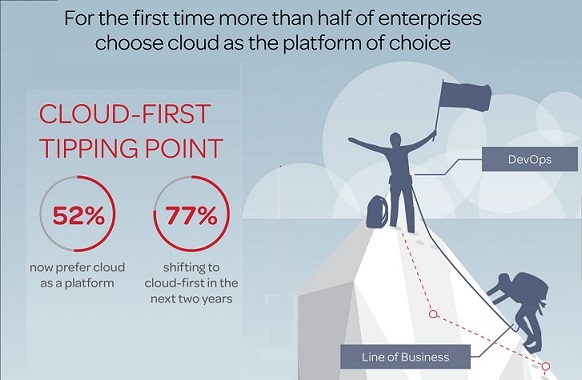While coding and software development will likely always play an important role in any organization, low-code/no-code tools have the potential to shift IT's approach to software delivery. I asked several DevOps Institute Ambassadors to weigh in on how they think low-code/no-code is shaping the future of software development. Here are key insights they shared with me ...
Low-Code/No-Code
Low-code tools have matured over the past few years but still have some limitations in their ability to develop, deliver and maintain complex enterprise business applications. It is important for businesses to really evaluate and select a platform that both aligns with their strategic application delivery drivers and mitigates risks. Here are some key features and capabilities that you should look for in your low-code development platform ...
Manual testing is a nuisance to DevOps teams. Enter automation. Adopting scriptless automation doesn't need to be as hard as it may look. There are four easy steps that teams can make to easily transition to the no-code software ...
Low code tools on the market focus on going from idea to app, by skipping the designer and much of the developer. That's a good way to get a concept out of your head and come up with a prototype, but to create a mission-critical business app with a good user experience, low-code apps on their own won't cut it ...
With today's increasingly remote-first work environment, teams are looking for ways to empower and streamline their workflows with the help of innovative new technologies. And, with remote workforces likely here to stay, no other time in recent history has been more ideal to implement new solutions that redefine how employees interact and collaborate. Because of this, more organizations are looking at no-code automation ...
As the pressure to achieve more with less increases in a challenging global economy, more organizations are changing their perspective and adopting rapid and simple no-code app development platforms. Such platforms enable teams to rapidly build apps that make a difference to business results and solve various technology bottlenecks. The no-code approach is allowing business experts to seamlessly innovate without the need for coding skills. It allows organizations to stay proactive and accelerate app development by bringing more people with varied skillsets into application development. Highlighted below are the reasons why 2021 will be the year of no-code application development ...
According to predictions made by Gartner, by 2024, low code development will be responsible for more than 65% of application development activity. This blog will help you understand what the buzz is all about. Let's find out what low code development is and how it can be the next big thing in the software development industry ...
There are several forces that are going to impact this field that we'll see in 2021. Let's get a peek into DevOps' future with an eye on some trends that have already shown up ...
Before the pandemic, Gartner predicted that by 2024, low-code development would be responsible for more than 65% of application development. With workers distributed and organizations now reliant on digital, this trend looks set to accelerate ...
Breakthroughs in communications platforms as a service (CPaaS) are making it increasingly easier to embed voice, messaging, chat and video into experiences than ever before through low-code or no-code options. These development platforms allow developers to embed application logic within the CPaaS to implement robust communications capabilities into business processes and applications — such as a voice interface or a chatbox — with just a few lines of code ...
Industry experts offer predictions on how DevOps and related technologies will evolve and impact business in 2020. Part 5 covers application development including Low Code and No Code ...
With the speed of innovation ever on the rise, customers expect the latest, greatest features and updates at their fingertips. That means businesses have to ship and deliver more features and products than ever before, faster than before — making it harder for often-overburdened technical teams to keep up with the rapid pace of change as they innovate and execute. With developer resources in high demand, no-code, low-code solutions promise to clear up backlogs and spark innovation by building up a citizen developer workforce ...
Developers have significant autonomy with respect to the selection of developer tools and technologies, according to an International Data Corporation (IDC) special report.vIn addition, developers exercise influence over enterprise purchasing decisions and should be viewed as key stakeholders in IT purchasing and procurement within any organization undergoing a movement to cloud accompanied by an internal digital transformation ...
DEVOPSdigest asked DevOps experts for their predictions on how DevOps and related technologies will evolve and impact business in 2019. Part 3 covers the development process ...
DEVOPSdigest asked experts from across the IT industry for their opinions on what steps in the SDLC should be automated. Part 2 covers the coding process ...
Organizations, big and small, are investing in DevOps and Agile approaches to continuously improve the efficiency, speed, and quality of their software. They recognize that the ability to identify and respond to digital innovation opportunities more quickly than competitors will determine if a company sinks or swims.The open question is: how quickly are these approaches taking hold, and are they generating the kinds of returns organizations are expecting? ...
Do you spend more time worrying about the "up-time" of your servers than the productivity of the employees who use them? Are you overly concerned with systems maintenance rather than software use cases? If you answered yes to any of those questions, you may need to consider low-code development ...
The number of apps needed to to fully embrace digital transformation is increasing each year, and organizations are relying on their IT staff to meet and support this need. However, IT isn't always equipped to handle this increased demand. According to the 2017 State of Application Development Report, 62 percent of IT managers reported having a large app development backlog, with some having more than 10 apps waiting to be developed. To get this issue under control CIOs must create a well-defined app strategy that includes providing the tools developers need and incorporates a DevOps approach ...
DevOps experts offer predictions on how DevOps and related technologies will evolve and impact business in 2018. Part 5 covers APIs and containers ...
DevOps experts offer predictions on how DevOps and related technologies will evolve and impact business in 2018. Part 4 covers Agile, CD and the development process ...
DevOps experts — analysts and consultants, users and the top vendors — offer thoughtful, insightful, often controversial and sometimes contradictory predictions on how DevOps and related technologies will evolve and impact business in 2017. Part 2 covers development and testing ...
Before launching a delegated development program, IT should to take into account these five key considerations for how to help users to help themselves ...
IT can help users to be proactive in solving issues that used to require that they create a help desk ticket and wait until (or hope) IT had the time to address it. Many users likely have excellent ideas for applications that will automate business processes and improve their departments' output and productivity levels. Now IT can let them build those apps themselves – even if they don't have much coding experience – by adopting a delegated approach to application development. These "low-coders" will help IT speed up software development and delivery timetables, and position the IT organization as an invaluable business partner, not a roadblock ...







